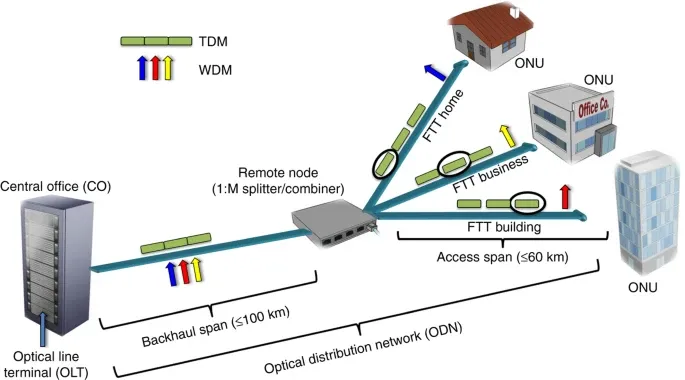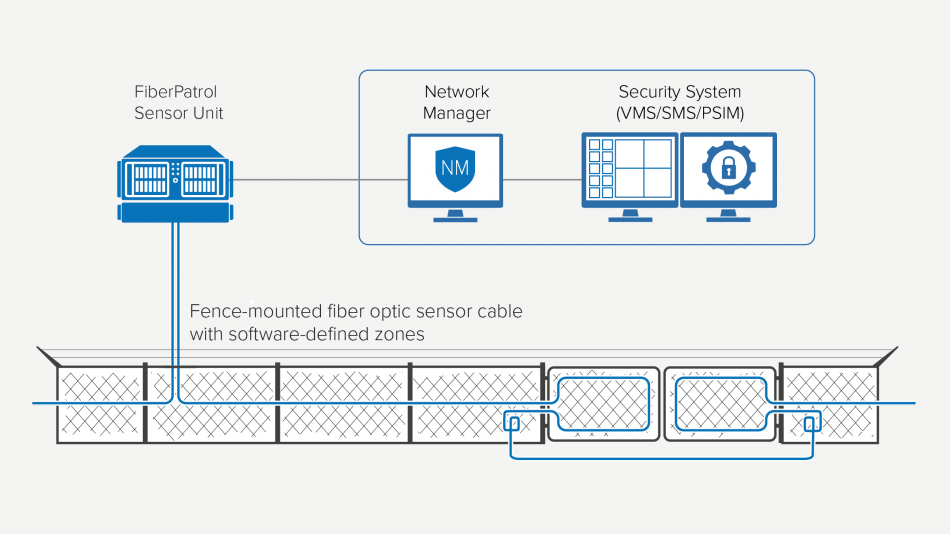Why Fiber Optic Safety Systems Are the Future of Protection
The change to fiber optic security systems notes a considerable innovation in the world of security, driven by their outstanding information transmission capacities and strength to external disturbances. These systems not just assist in faster and extra dependable communication but likewise provide an affordable option with minimized maintenance requirements. As the landscape of safety progresses along with emerging innovations such as AI and IoT, the possibility for fiber optics to enhance and redefine security facilities comes to be significantly evident. However, the implications of these advancements increase critical inquiries about the future of safety and security actions and their performance in an ever-changing setting.
Advantages of Fiber Optic Systems
One of the key benefits of fiber optic systems is their superior data transfer capability, which facilitates the transmission of huge quantities of data over lengthy ranges without considerable loss. This characteristic is specifically valuable for safety applications that need the continuous surveillance and transfer of high-definition video clip feeds, sensing unit information, and various other essential information. Fiber optics can suit the growing needs of contemporary security systems, making certain that data remains undamaged and reliable.
In addition, fiber optic wires are less vulnerable to electromagnetic disturbance, which can be a significant issue in settings with numerous digital gadgets. This resistance boosts the stability of the information being sent, thereby lessening the risk of data violations or system failures. Fiber optic systems are naturally extra protected than typical copper cords, as touching right into a fiber optic line without detection is exceptionally hard.
The toughness of fiber optic cords likewise adds to their appeal. They are resistant to environmental aspects such as dampness and temperature fluctuations, minimizing maintenance expenses and boosting system long life. Overall, these benefits position fiber optic systems as a durable and effective selection for modern protection infrastructures, guaranteeing reputable and protected information transmission.
Boosted Data Transmission Rate

The ability to send vast amounts of information swiftly promotes the smooth assimilation of high-definition video clip feeds and advanced analytics. Safety and security systems can now refine and analyze details in real-time, improving reaction times and situational recognition. Additionally, fiber optic links support longer transmission distances without deterioration of signal top quality, making them excellent for large security networks.
The boosted speed of fiber optic systems not only enhances the efficiency of protection procedures yet additionally decreases latency. This is particularly important in critical circumstances where timely decision-making can protect against safety and security breaches or mitigate possible risks. As organizations continue to prioritize safety and security and effectiveness, the demand for quick and reliable information transmission will undoubtedly solidify fiber optic systems as a keystone of modern security facilities.
Resistance to Interference
Fiber optic protection systems regularly demonstrate outstanding resistance to electro-magnetic interference, a critical advantage in settings susceptible to digital sound. Unlike typical copper cords, which can be adversely affected by magnetic fields, superhigh frequency disturbance, and various click here for more other types of electric disruption, fiber optic cords use light to transmit information. This intrinsic residential or commercial property makes certain that the signals continue to be clear and unchanged, despite surrounding electronic task.
Using glass or plastic fibers in fiber optic innovation produces a barrier against interference, enabling trustworthy information transmission even in difficult situations such as commercial centers, city locations with high electronic web traffic, or places near radio towers. This characteristic significantly decreases the possibility of signal destruction or loss, making fiber optic systems especially ideal for security applications where integrity and precision of data are extremely important.
In addition, this resistance to interference boosts the overall performance and integrity of safety systems, guaranteeing that monitoring and alert systems function effortlessly. In a world where safety is progressively intimidated by innovative modern technologies, the resilience of fiber optic systems stands out as a crucial attribute, strengthening their status as an important element of modern protection framework.
Cost-Effectiveness In Time
Significant expense financial savings can be attained in time with the execution of fiber optic safety systems. While the initial financial investment might appear higher compared to traditional copper-based systems, the lasting monetary benefits become apparent with decreased functional and maintenance prices (fiber security). Fiber optic cords are naturally much more resilient and much less prone to environmental elements, which translates to decrease replacement and fixing expenditures over their life expectancy
Additionally, fiber optic systems require much less power to run, which even more lowers power prices. Enhanced information transmission abilities enable for less repeaters and amplifiers, lessening tools financial investment and improving installment processes. The scalability of these systems also adds to cost-effectiveness, as organizations can increase their security facilities without sustaining significant additional costs.
An additional factor to consider is the enhanced performance in monitoring and action capacities that fiber optics supply. Boosted real-time information transmission can bring about quicker event reaction times, potentially mitigating losses and liabilities connected with safety and security breaches. Altogether, the lasting benefits of fiber optic protection systems not just justify the initial expense yet also place them as an economically sensible selection for organizations seeking robust protection services.

Future Advancements in Security
Progressing modern technologies are established to change protection systems, integrating expert system (AI) and device learning to boost danger discovery and action capacities. These advancements will certainly enable safety and security systems to examine substantial amounts visit this site right here of data in real-time, identifying patterns and anomalies that indicate possible hazards. This aggressive approach will certainly make it possible for faster decision-making and more efficient incident responses.
Additionally, the consolidation of the Net of Points (IoT) is leading the way for interconnected protection tools, a fantastic read supplying comprehensive monitoring and tracking. Smart sensing units can communicate info concerning ecological modifications, while automated signals can notify safety and security personnel promptly of suspicious tasks.
Moreover, the advancement of biometric modern technologies will certainly additionally boost security devices. Face acknowledgment, fingerprint scanning, and retina recognition are ending up being a lot more innovative, supplying layers of authentication that are difficult to bypass.
Final Thought
In verdict, fiber optic safety systems represent a substantial advancement in defense innovation, supplying exceptional data transmission rate, resistance to electro-magnetic disturbance, and long-lasting cost-effectiveness. As the demand for innovative security solutions remains to grow, the assimilation of fiber optics with arising technologies such as AI, IoT, and biometrics will certainly further improve security frameworks (fiber security). The combination of these advancements will make sure an extra protected and receptive atmosphere, strengthening optical fiber as a foundation of future safety systems